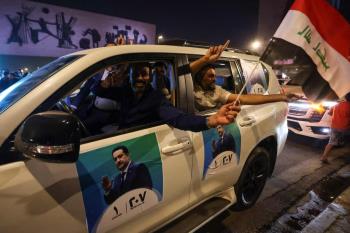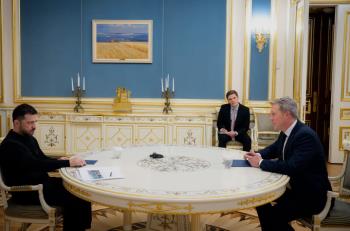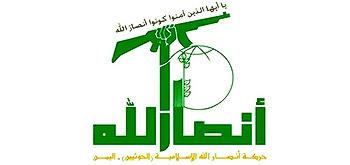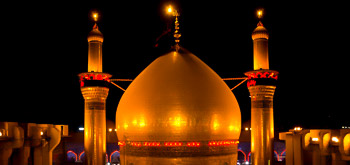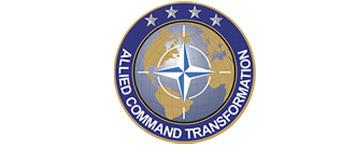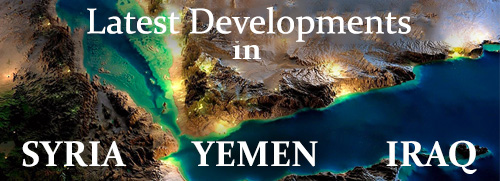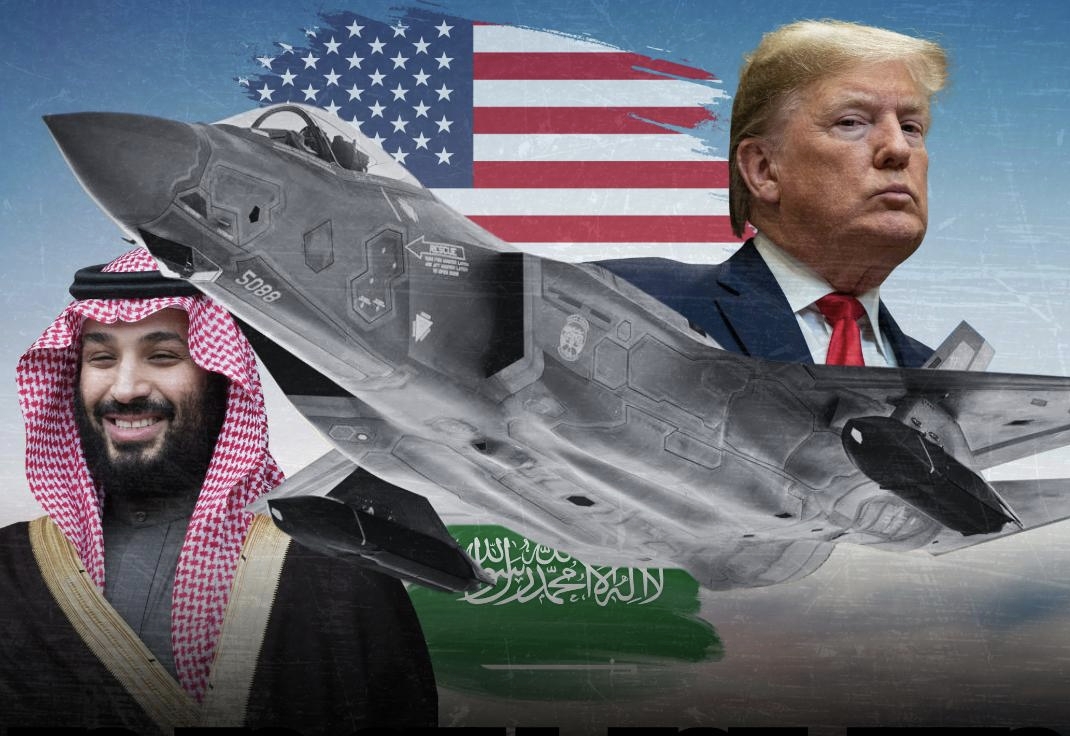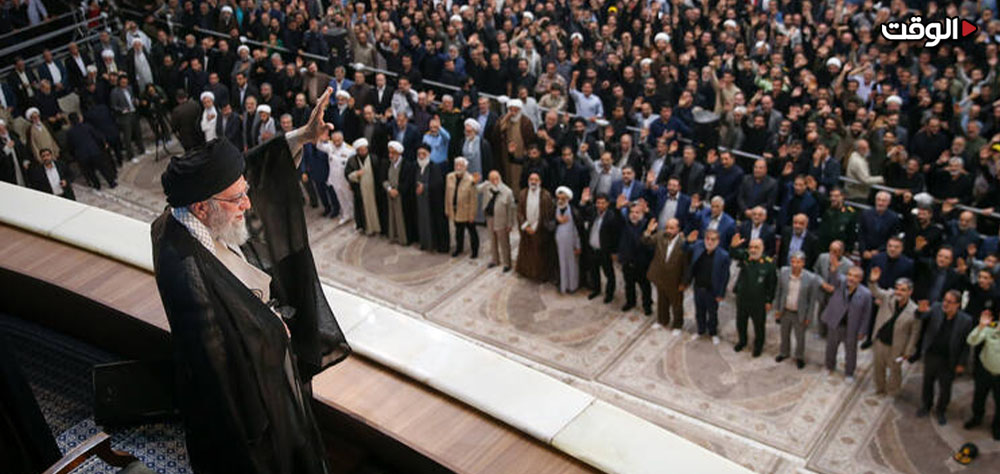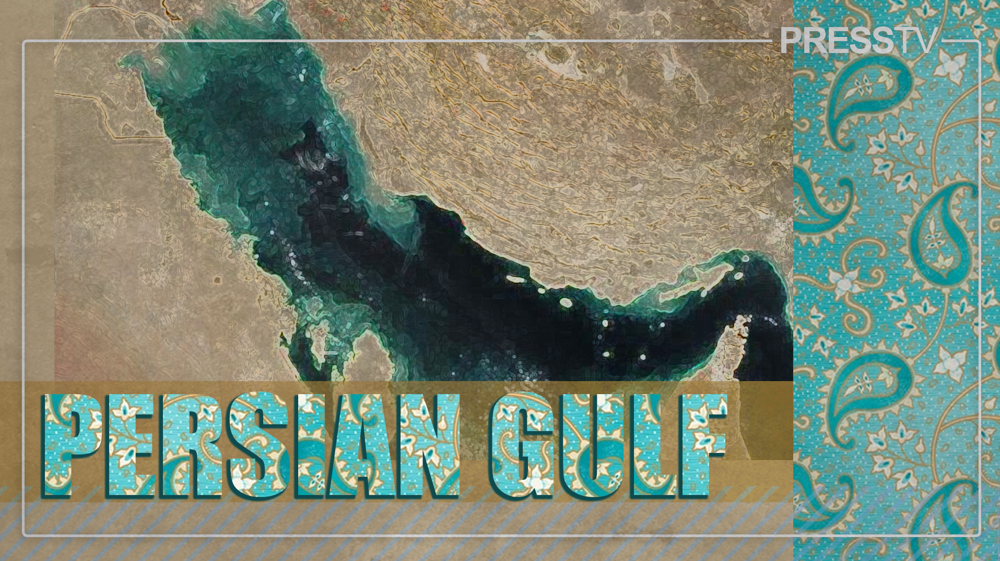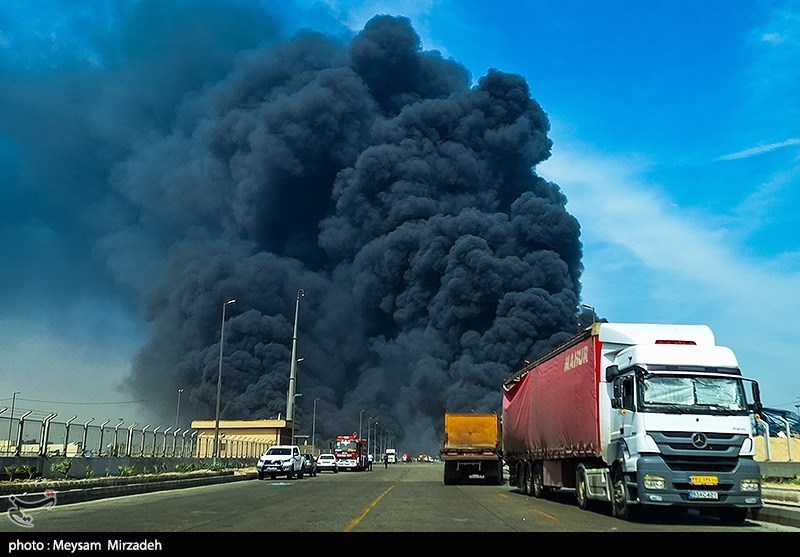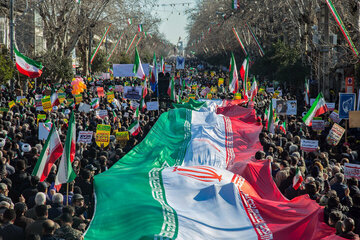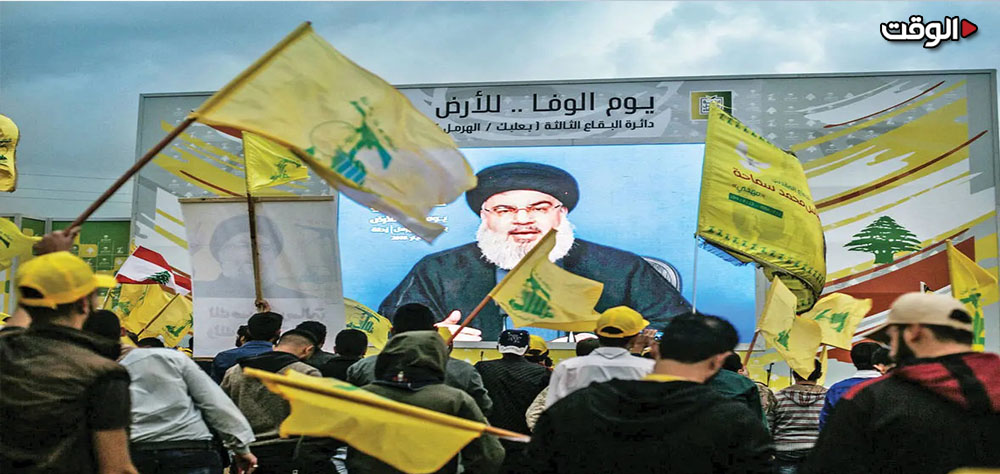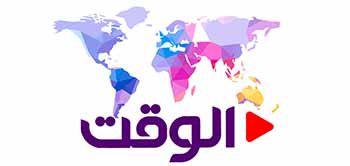Alwaght- Washington DC in the day of the Saudi Crown Prince Mohammed bin Salman's visit more than ever was a scene of a political show; red carpet rolled out in the White House, portraits of US presidents on the walls of the White House, and the style of the hosting that was more than usually official all gave a picture of political sychophancy. After years of tensions especially following the murder of the Washington Post author Jamal Khashoggi, this was the first official visit of the king-in-waiting to the US. That perhaps is why Washington chose to make the political event more splendid.
In the meantime, Washington's approval of the F-35 stealth fighter jet sale to Saudi Arabia has ignited a firestorm of strategic questions and speculation.
On the surface, this is a straightforward arms deal between a global power and a key regional player. In reality, it sends stark signals, both overt and covert, about the future balance of power in the Persian Gulf, Riyadh's place in US security strategy, and the emerging contours of a new great game across West Asia.
The deal culminates at a critical juncture: behind-the-scenes efforts to normalize Saudi-Israeli ties have quietly resumed, the Gaza war has redrawn regional alliances, rifts within the (Persian) Gulf Cooperation Council are deepening, and Turkey is steadily advancing its own bid for regional dominance.
Consequently, analysts cannot treat Saudi Arabia's entry into the club of F-35 users as a mere weapons purchase. Within Washington's strategic calculus, the F-35 transcends its role as a military platform; it operates as a gold standard of strategic trust, a barometer of a nation's closeness to the inner circle of American power.
This forces a central question onto the geopolitical landscape: to what extent does the F-35 sale to Riyadh represent a true game-changer, and to what extent should it be seen as falling within a policy of symbolizatiom and power projection?
1. F-35, symbol of Saudi entry into the Washington's "club of super allies"
Selling a fifth-gen fighter jet to Saudi Arabia is not just a military deal, it is a "geopolitical symbolism" seen by the Saudis as the country's entry into the limited orbit of countries Washington can be confident in, indeed in the highest strategic degree.
The F-35 is more than a weapon; it is a political benchmark, signifying which nations the US categorizes as top-tier allies. For the Saudis, acquiring this jet carries a meaning far deeper than enhancing air power: it is an entry pass into an exclusive echelon of American foreign policy, a club whose only other members are Israel, Japan, and the Britain, and a few others.
In this context, Riyadh is maneuvering to elevate itself beyond Washington's traditional security partnerships with (Persian) Gulf Cooperation Council states. From the Saudi perspective, the F-35 equates to a US endorsement of a crucial proposition: that Saudi Arabia has graduated from a regional partner to a global player in Washington's geopolitical calculus. Crown Prince Mohammed bin Salman understands that rehabilitating Saudi Arabia's international image, especially after the Khashoggi murder and the war in Yemen, requires powerful symbols to signal to global elites that Washington still views Riyadh as the indispensable pillar of regional security.
On a symbolic level, the F-35 also allows Saudi Arabia to reframe its intense rivalry with the UAE, Qatar, and Turkey. It shifts the competition from the economic arena onto the more decisive terrain of US security policy. The message Riyadh aims to send is crystal clear: In the new architecture of regional security, we are America's primary partner. It is precisely this political-psychological value that led Riyadh to frame the deal as a strategic victory, even though the version it will receive is a significantly downgraded model from the one operated by Israel.
2. Saudi rivalry with Turkey in the Muslim world
On the regional landscape, the F-35 sale to the Saudis carries a pointed, if indirect, message for Turkey. Over the past decade, Ankara has aggressively campaigned to position itself as the de facto leader of the Muslim world, projecting power from its entente with Qatar to its repeated military interventions in Syria, Libya, the Caucasus, and the Eastern Mediterranean. However, Saudi Arabia's acquisition of the F-35 allows Riyadh to craft a powerful counter-narrative: that Washington is anointing it, not Ankara, as the preeminent power in the Muslim world.
The deal exacerbates a key Turkish vulnerability. For years, Turkey banked on its role in the F-35 program, but its expulsion from the consortium following its purchase of the Russian S-400 system effectively knocked it out of the high-tech arms race. Now, Saudi Arabia's potential accession to the F-35 club threatens to widen this technological gap into a chasm, visibly underscoring Ankara's strategic drift from the West.
In the soft-power rivalry between Riyadh and Ankara for the political representation of Sunni world, securing a symbolic platform like the F-35 is a game-changer for the Saudis. It serves as tangible proof of their superior standing in Washington and solidifies their role as US's strategic anchor in the Islamic world. While Turkey has long sought to project influence through its NATO membership and widespread military footprint, Riyadh has now played a trump card: US's explicit political endorsement.
3. Influence of F-35 deal on competition within (P) GCC
Saudi Arabia is not just rivaling Turkey, in the (P) GCC it struggles to secure the position of an unchallenged leader. Since years, the UAE has tried to sell itself as a strategic ally to the US through strategic closeness to the Israeli regime and the US itself and early joining of the normalization project, officially called Abraham Accords. Qatar, for its part, is competing with Saudi Arabia symbolically through its soft power developed by its media outlets like Al Jazeera and also through the role it plays in such cases as the Taliban and Gaza.
On a symbolic level, Saudi Arabia's acquisition of the F-35 has the power to fundamentally redefine Riyadh's position. Within the Saudi narrative, this deal sends a message: Washington still sees Riyadh as the primary architect of Persian Gulf security. This message carries significant weight for nations like the UAE, which have spent years cultivating an image as America's top-priority security partner in the region.
If the 2010s cast the UAE as Washington's most innovative and proactive ally, the F-35 now allows the Saudis to directly challenge that picture. It demonstrates that when it comes to the bottom line, the United States still relies on Saudi Arabia as the indispensable anchor for both global energy stability and regional security.
4. Technological gap: Saudi vs. Israeli version
Despite all these political shows and symbolism, there is a fundamental fact: The version of F-35 the Saudis are set to receive will be fundamentally different from one held by Israel. A cornerstone of US policy since the 1960s has been the preservation of Israel's Qualitative Military Edge (QME) under any and all circumstances. Even US's closest allies, such as the UAE, Australia, and Japan, have never received versions of American weaponry identical to those supplied to Israel.
Consequently, even after normalizing relations, Saudi Arabia will receive a deliberately downgraded F-35. Critical systems, including its electronic warfare suite, AESA radar, compatibility with specific advanced munitions, next-generation data links, and even certain stealth-related algorithms, will be configured to a lower performance tier.
This is precisely where the paradox of Saudi power is laid bare. On one hand, Riyadh seeks to project the image of a nation joining the ranks of US's top-tier global partners. On the other, Israel and its influential lobby in Washington will inevitably ensure that the Arab monarchy never acquires a version of the jet that could pose even a theoretical threat to Israel's military dominance or its strategic ambitions in the region.
This reality underscores a fundamental limit of US-brokered normalization: Washington will never permit a Muslim nation, not even a key ally like Saudi Arabia, to approach the technological pinnacle reserved for Israel.
5. Saudi Arabia endorses normalization: Why is US still playing cautiously?
A fundamental contradiction lies at the heart of this deal: Saudi Arabia poses no military threat to Israel, nor is there any foreseeable scenario where it would. The Saudis have cultivated behind-the-scenes intelligence ties with Tel Aviv, are on a clear path to normalization, and have even cooperated with Israeli interests on regional fronts, aligning against the Axis of Resistance in Yemen, the Red Sea, and regarding Hezbollah in Lebanon.
Despite this alignment, the US and Israel will still not permit Riyadh to acquire the fully-capable version of the F-35. The rationale for this is rooted in what can be called Israel's doctrine of "strategic distrust." Tel Aviv operates on the conviction that Arab regimes, even the most friendly Persian Gulf states, are inherently transient. From this perspective, empowering them with top-tier technology introduces an unacceptable long-term unpredictability.
Consequently, even in a deal explicitly designed to forge a new US-Saudi-Israeli front, Washington meticulously adheres to all of Israel's security red lines.
This caution bears a critical message: Israel's military supremacy is not determined by the current policies of Arab states, but is treated as a permanent, non-negotiable principle.
6. Jets in return for making concessions to Trump: Promise of $1 trillion in Saudi investment in the US
Bin Salman delivered a clear message on this trip: "We are willing to pay, if you are willing to grant concessions." The Saudi Crown Prince announced he would increase current $600 billion investments to a staggering $1 trillion, a figure of vital importance to the US economy and, crucially, to a Trump administration in desperate need of an economic victory.
Fully aware of this leverage, Trump decided to put his most significant card on the table which is approving the sale of the F-35.
In essence, the deal epitomizes a transaction where Saudi money is being exchanged for American symbolic prestige. Washington is providing something that carries little geopolitical cost for itself, while Riyadh is offering what amounts to a major economic and political win for the US.
But a critical question remains: Can the F-35 genuinely reshape the region's strategic equations? Or is it merely a symbolic trophy, designed to bolster the claims of victory for both Trump and bin Salman?
7. Non-NATO ally: A glaring but shallow title
Giving "Major Non-NATO Ally" (MNNA) title to Saudi Arabia was another key symbol of this visit. However, this title creates no legally binding defensive obligations for the US.
Countries as diverse as Argentina, Bahrain, Pakistan, Tunisia, and even Kenya hold this designation, though none of which enjoy a US security guarantee.
From a legal standpoint, this title represents an upgrade in cooperation, not a defensive pact. It facilitates easier access to certain military technology and industrial cooperation, but should Saudi Arabia face a conflict or external threat, the US has no automatic obligation to come to its defense.
This underscores a critical reality: even as Riyadh secures high-profile symbolic wins, it has fallen short of its ultimate objective, a concrete American security guarantee. The foundational assurance it seeks remains elusive.
8. Will F-35 upend regional calculus?
This was said reveals that the deal's tangible impact on the regional balance of power will be far less dramatic than the media narrative suggests.
The reality is that even if the Arab kingdom acquires the F-35, the fundamental geopolitical equations of the region will not be upended. The reasons are clear:
First, the Saudi version of the jet will be intentionally limited, preserving Israel's QMG.
Second, the war in Yemen proved that Saudi Arabia's overwhelming air superiority is insufficient for decisive victory and cannot compensate for critical weaknesses in air defense, ground forces, and overall military command and structure. Saudi military power is ultimately dependent on training, infrastructure, and leadership, not merely the type of aircraft it operates. The F-35 may offer symbolic deterrence, but it cannot transform the underlying architecture of Saudi military capability.
Furthermore, the most pressing threats to Saudi security are asymmetric, from Yemen, to drones, to missiles and F-35 has a minor role countering these threats.
In the final analysis, the F-35 deal and the MNNA status are less of a strategic transformation and more of a high-profile spectacle with two primary functions:
1. For bin Salman: A big show of victory in Washington and proving that he is capable of upgrading the kingdom's international position
2. For Trump: Drawing tremendous Saudi investment to the American economy and promoting it as a foreign policy breakthrough
So, for Saudi Arabia, the F-35 is more a tool of symbolism than a true game-changing instrument. It is a symbol of proving the idea that in the regional power architecture, Riyadh wants to sit at the head of the table, even if it is yet denied access to all of those tools on the table.

